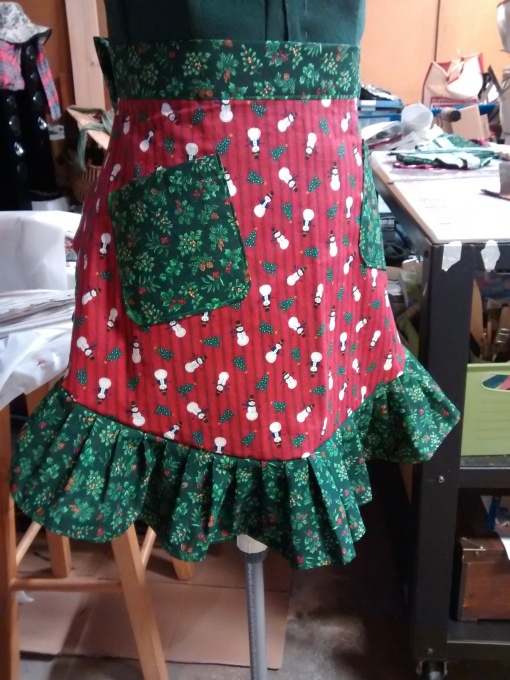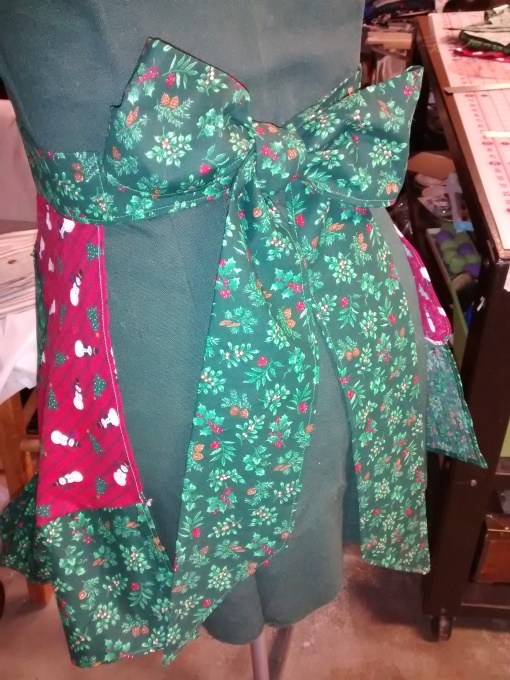I did make quite a few garments for this year’s Faire Season. The following one of three costumes started in March and completed in time for our home faire in July. It was also one of the most complicated projects I’ve worked on, to date. It currently totals seven pieces, in six colors and three different different fabrics.

Meet Demetrius the Griffin
Demetrius is a friend of a guild member, who I first met at a Renaissance Faire gone Baroque Piracy, last March. I gave him one of my business cards and the emails began.
His goal was to dress as a Traveling Merchant of the Renaissance Era. He had many ideas and 3 concept drawings, which he sent copies of. Two of which are shown below.

Concept Sketch

Full Color Concept Drawing of Demetrius the Merchant
Through emails we planned the minimum pieces he needed , that I could make. One robe with vents for the wings and tail, pants, shirt, a faux shirt or dicky, a hat and a coin pouch.
We then met for measurement taking and fabric selection. The original idea was to dress him in neutral tones of brown and grey. After some discussion we broadened the color palette, to a light grey shirt, light brown or tan pants, a dark blue robe with gold linen trim, a tan hat with gold trim, and a gold coin pouch with a blue rolled hem.
In this post I will discuss 2 of these pieces, the pouch and the hat.

Coin Pouch
The simplest item to make was finished first. This was the coin pouch. Two pieces of gold heavy weight linen trimmed with a blue woolly nylon rolled hem, and a casing stitched for the draw string.
The hat was the second item of this project to be completed. It is a cone shaped hat From a Victorian Santa Claus Pattern, that I modified.
In the drawing the hat would sit between the ears and drape over the back of the head. The color would match the robe and be trimmed in grey faux fur. We changed it to be the same color of heavy weight Ginger colored Linen. and trimmed with a wide band of Autumn Gold heavy weight linen. The band was doubly interface to ensure it wound stand up.and the cone was lined to give it more fullness in draping.

The Hat is Finished with a Gold Colored Feather
As you can see the completed hat does not sit between the ears. We could not find a way to hold the hat in place without using bobby pins or something else that would pull out Demetrius’ fur, or require attempting to pin it to the mask, which could stap the head within, or pull out fur, in the pulling out the pin.
For now at least, the hat sits on one ear, with a feather in the band.












































